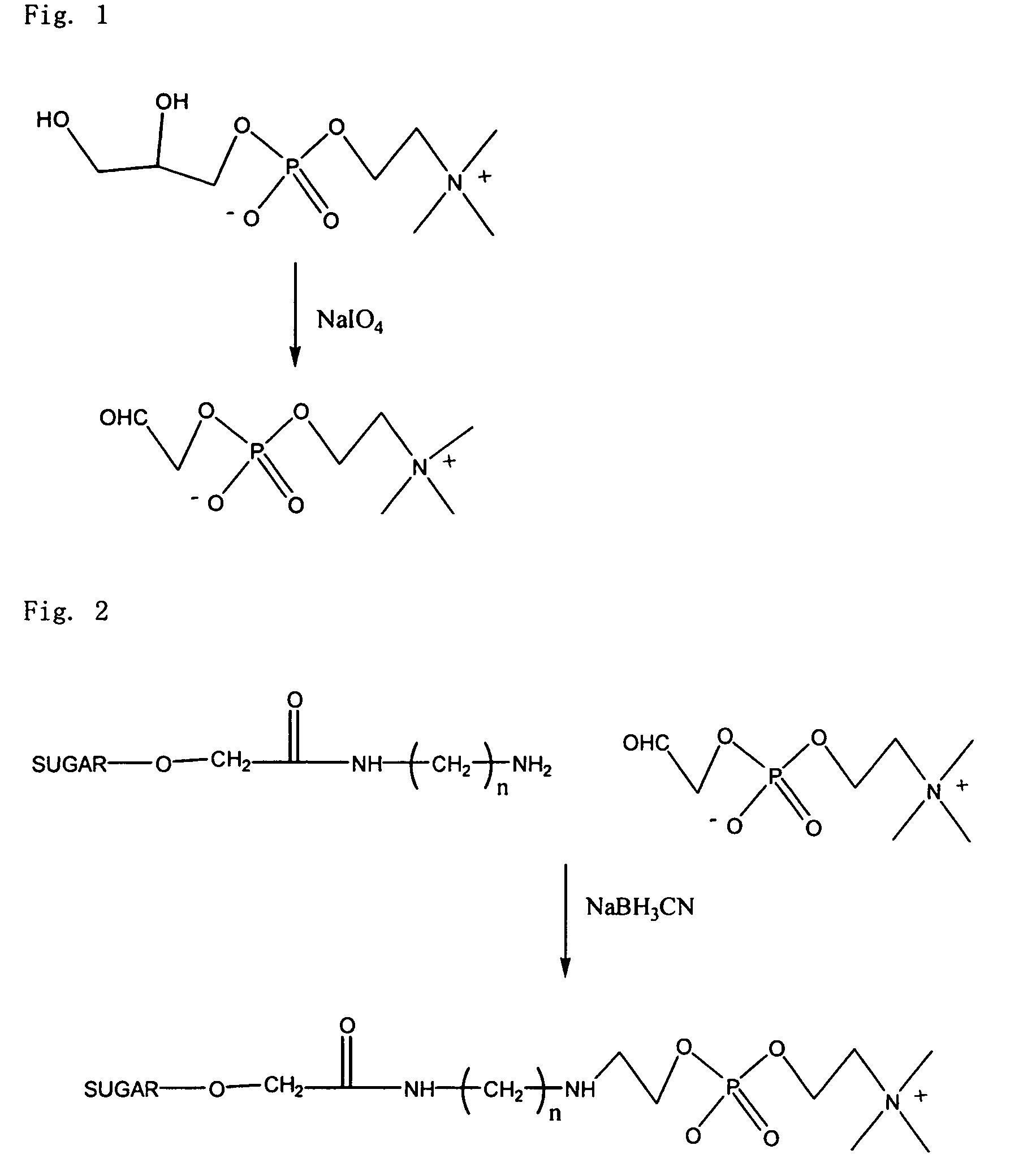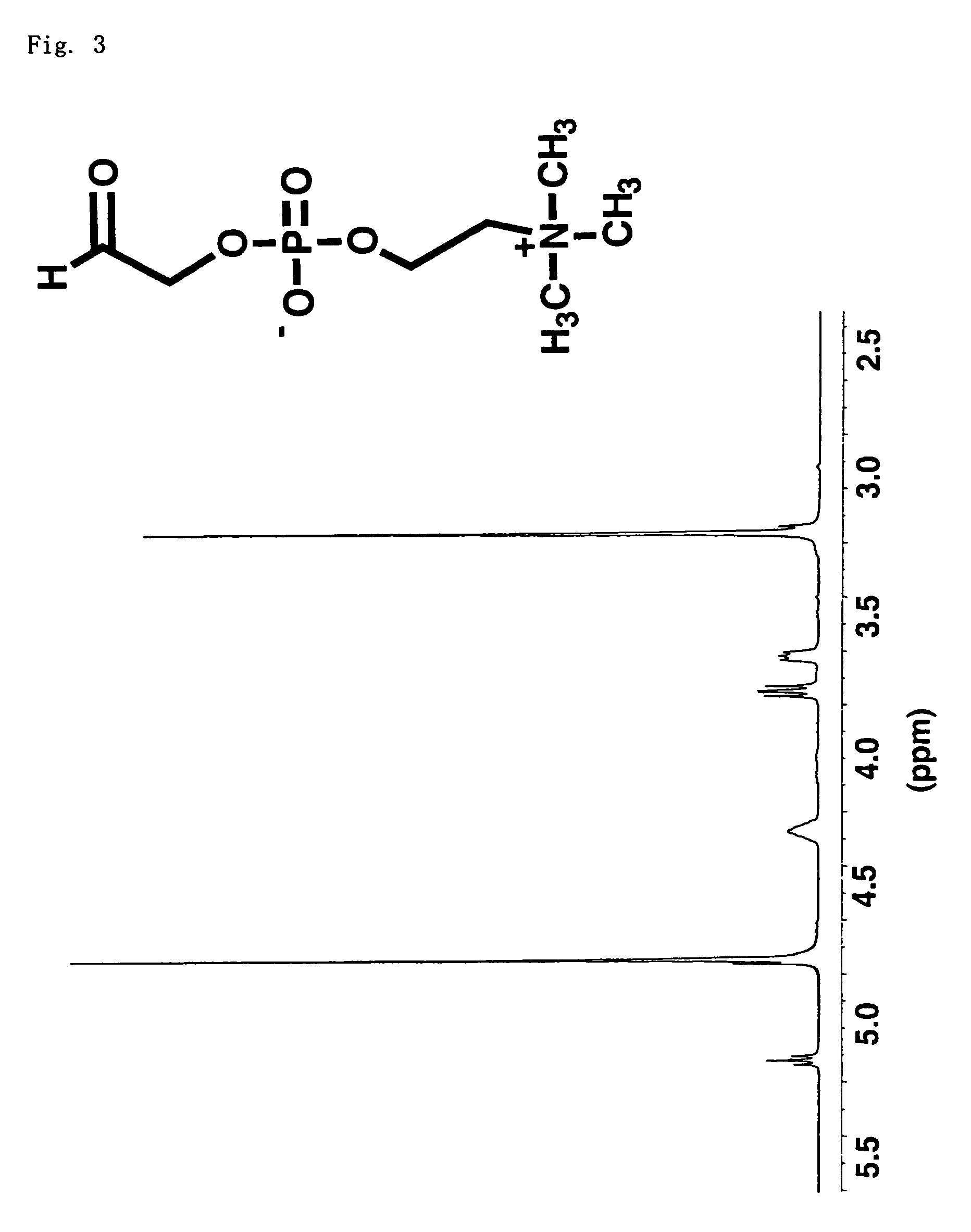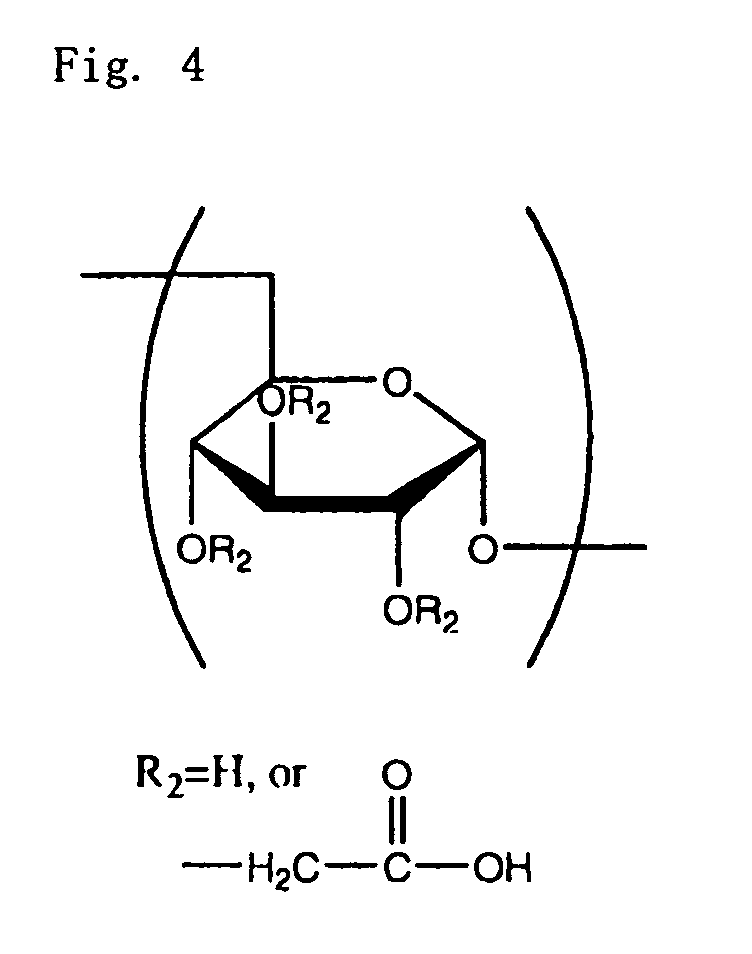Polysaccharide containing phosphorylcholine group and process for producing the same
a technology of phosphorylcholine and polysaccharide, which is applied in the field of polysaccharides containing phosphorylcholine groups, can solve the problems of reducing the polymerization yield, complicating the technique, and difficult to produce high molecular weight polymers
- Summary
- Abstract
- Description
- Claims
- Application Information
AI Technical Summary
Benefits of technology
Problems solved by technology
Method used
Image
Examples
synthesis example 1
An aldehyde derivative containing a phosphorylcholine group
[0084]L-α-glycerophosphorylcholine (450 mg) is dissolved in 15 ml of distilled water and cooled in an ice water bath. Sodium periodate (750 mg) is added and two hours of stirring is carried out. Furthermore, ethylene glycol (150 mg) is added and overnightstirring is carried out. The reaction solution is vacuum-concentrated and vacuum-dried and the target substance is extracted with methanol.
[0085]The structural formula and the NMR spectrum are shown in FIG. 3.
synthesis example 2
Synthesis of carboxymethyldextran
[0086]Dextran (5 g) and chloroacetic acid (10.28 g) are dissolved in a 6N solution of sodium hydrochloride, followed by heating and stirring for one hour at 60° C. After cooling the mixture down to room temperature, the target substance is obtained by means of reprecipitation in methanol. (Yield 6.2 g).
[0087]The structural formula is shown in FIG. 4.
synthesis example 3
Synthesis of aminodextran
[0088]The carboxydextran (1 g) of Synthesis example 2 and ethyelenediamine (10 ml) are dissolved in distilled water (10 ml) and the pH is adjusted to five. 1{3-(dimethylamino)propyl}3-ethylcarbodiimide hydrochloride (1.5 g) is gradually added. After stirring overnight at room temperature, the reaction solution is dialyzed in water and 1.25 g of the target substance is obtained by means of lyophilization.
[0089]The structural formula and the NMR spectrum are shown in FIG. 5.
PUM
| Property | Measurement | Unit |
|---|---|---|
| temperature | aaaaa | aaaaa |
| temperature | aaaaa | aaaaa |
| biocompatibility | aaaaa | aaaaa |
Abstract
Description
Claims
Application Information
 Login to View More
Login to View More - R&D
- Intellectual Property
- Life Sciences
- Materials
- Tech Scout
- Unparalleled Data Quality
- Higher Quality Content
- 60% Fewer Hallucinations
Browse by: Latest US Patents, China's latest patents, Technical Efficacy Thesaurus, Application Domain, Technology Topic, Popular Technical Reports.
© 2025 PatSnap. All rights reserved.Legal|Privacy policy|Modern Slavery Act Transparency Statement|Sitemap|About US| Contact US: help@patsnap.com



